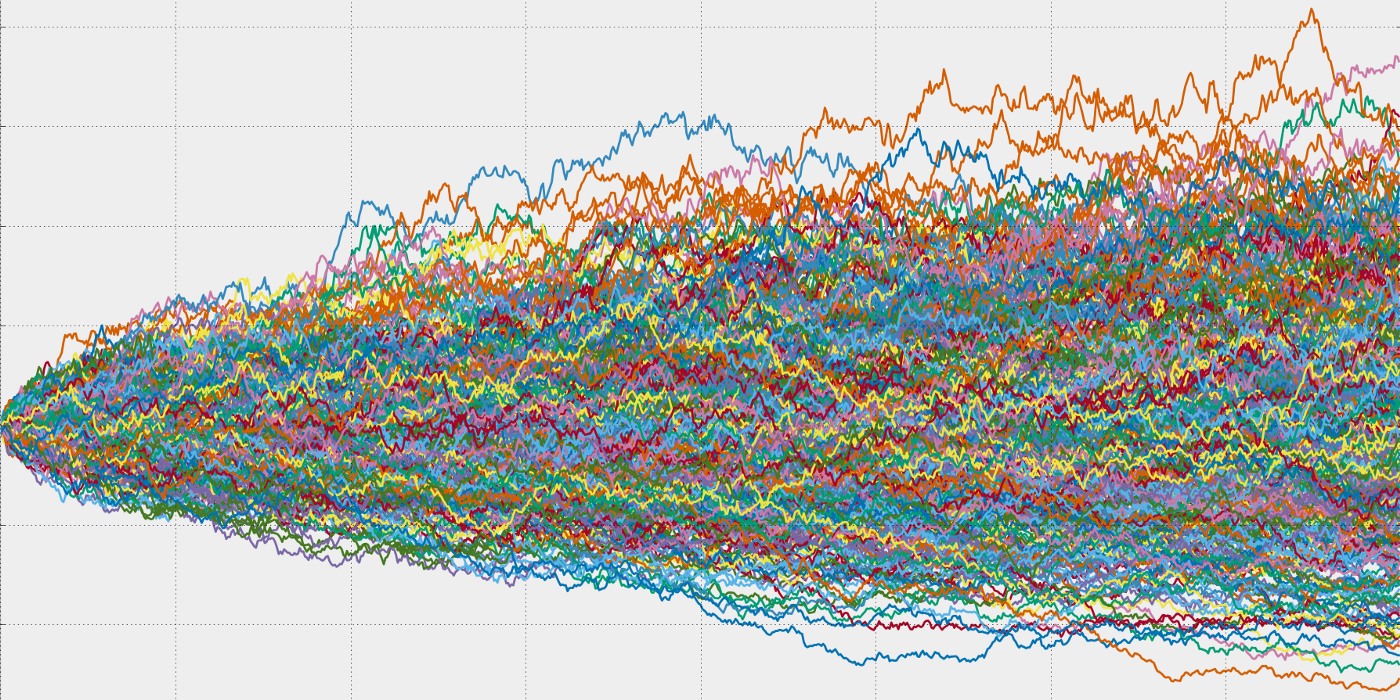Table of Contents
- Spot FX Versus Futures: Understanding the Differences
- The Forex Marketplace Today
- Liquidity Provider Mechanics
- Types of Quotes and Their Implications for Trading
- Last Look Practice in FX Trading
- Mark-Outs: Analyzing Client Profitability for Liquidity Providers
- An FX Aggregator
- Adverse Selection in FX Trading
- Analyzing Counterparties in an Aggregator
- Conclusion
The intricate landscape of Over-The-Counter (OTC) Foreign Exchange (FX) trading presents a unique set of challenges, markedly distinct from other asset classes such as equity index futures, bonds/rates futures, and commodity futures. Unlike these other asset classes which are often traded on exchanges, FX predominantly operates through OTC forwards, owing to the considerable depth and breadth of this market compared to its futures counterpart. However, this also introduces complexity due to the OTC FX market’s fragmented and nuanced nature, necessitating specialized systems and expertise for effective navigation.
This article will dive deep into the nature and intricacies of the FX markets, focusing on aspects such as market fragmentation, the varied types of liquidity providers, and the different types of quotes offered. Furthermore, we will explore the significant role that a meticulously constructed FX quote aggregation system plays in surmounting the challenges posed by market fragmentation, thereby enabling efficient trading execution.
In subsequent sections, we will examine the contrast between spot FX and futures, unpack the current state of the forex marketplace, dissect the dynamics of liquidity providers, and assess the implications of various quoting practices. We will also scrutinize the controversial ‘last look’ practice, analyze the significance of ‘mark-outs’ in evaluating client profitability, and elaborate on the construction and benefits of employing an FX aggregator in the trading ecosystem.
The insights presented here are aimed at furnishing traders, especially those dealing with systematic and algorithmic strategies, with a clearer understanding of the market and tools at their disposal for optimizing trade execution.
Spot FX Versus Futures: Understanding the Differences
The distinctions between trading instruments such as spot FX and futures are critical to grasp. Futures, being exchange-traded, offer traders the benefits of a transparent limit order book and protective measures against market manipulation. In contrast, the spot FX market, which lacks a centralized exchange, operates on a more nuanced landscape. Traders must navigate through a market where price discovery is contingent upon relationships with a variety of market participants and the quotes they provide.
The fragmented nature of the spot FX market can complicate execution, but it is also where its potential lies. The tight spreads and high liquidity inherent to this marketplace can translate to lower trading costs, giving spot FX a competitive edge over futures. This dichotomy between the challenges and opportunities presented by the spot FX market sets the stage for the development and adoption of bespoke FX aggregators.
These tools have emerged as vital components in managing the complexities of FX trading. They serve as a bridge over the fragmented market, allowing traders to consolidate quotes from various liquidity providers into a coherent and manageable framework. This not only streamlines the execution process but also provides traders with a competitive advantage in a fast-paced and often opaque market.
It becomes clear that the right tools and strategies can turn the inherent challenges of the market into opportunities for enhanced trading performance. The following sections will delve deeper into the mechanics of liquidity providers, the types of quotes available, and the pivotal role of FX aggregators in this financial landscape.
The Forex Marketplace Today
The global Forex market boasts an astounding trading volume, estimated at $6.6 trillion per day, with spot FX transactions accounting for approximately $2.2 trillion of this daily turnover. However, liquidity within the spot FX domain is notably dispersed across various platforms. The leading players by volume include EBS (now part of CME Group), which primarily handles G10 currency pairs, and Refinitiv, focused on Commonwealth pairs. Additionally, several electronic communication networks (ECNs) such as HOTSPOT (now part of Cboe FX Markets) and FASTMATCH (Euronext) have gained prominence among traders due to the reduced access fees and less restrictive quote availability compared to the primary markets.
These ECNs have risen in popularity as alternatives to the higher-cost, primary markets, offering traders a diverse set of venues for executing their trades. In addition to these platforms, numerous aggregators—like Bloomberg—collect quotes from various banks and non-bank institutions, further contributing to the market’s fragmentation. Banks also engage in the interbank market, which allows for substantial transactions at narrow spreads. This complex distribution of FX volumes across different channels necessitates a sophisticated approach to navigate effectively.
Liquidity Provider Mechanics
Liquidity providers (LPs) are akin to market makers found on futures or equities exchanges. They play a vital role in the market’s functionality by offering a two-sided quote (bid and ask) and profit primarily from the spread—the difference between the buying and selling price. These LPs might hold onto a position briefly, aiming to offset it against other client trades or offload it onto the market if it becomes a risk or unprofitable.
The process through which an LP generates a quote is meticulous and follows a specific pattern. Initially, the LP establishes a mid-market price by assimilating prices from the primary market, ECNs, and interbank quotes. This gathered data feeds into a proprietary model that estimates the mid-market rate. Subsequently, the LP applies a half spread to either side of this mid-market price to generate the bid and ask quotes sent to clients. Several factors influence the spread’s size, such as currency pair volatility, client trading volume, and notably, the individual client’s profitability to the LP, as discerned through mark-out analysis. Those clients perceived as more profitable are often rewarded with tighter spreads.
Moreover, LPs may adjust the mid-market price to manage their current positions effectively. This practice, known as ‘skew,’ involves tweaking the quote to either encourage or discourage client orders on one side of the market. For example, if an LP holds a substantial position in EUR/USD and wishes to reduce exposure, the LP might decrease the offer price to entice clients to buy, thereby balancing the LP’s position.
Types of Quotes and Their Implications for Trading
In the world of spot FX, liquidity providers (LPs) extend two primary types of quotes to traders: sweepable and full amount. Sweepable quotes are designed for traders looking to rapidly build or diminish large positions. These quotes cover multiple price levels or multiple quotes at the same price level, offering the flexibility necessary for significant volume trades. However, due to the increased risk taken on by the LP, these quotes are typically associated with a wider spread.
Full amount quotes, on the other hand, limit traders to a single quote at any given time. This quote type is often preferred by large systematic firms that execute trades over a longer time horizon using algorithms like VWAP/TWAP. Despite the restrictions, full amount quotes are advantageous for these firms due to the smaller quote sizes and tighter spreads, which can lead to cost savings over time.
Within an aggregator system, traders encounter both disclosed and non-disclosed quotes. Disclosed quotes reveal the identities of both the sender and receiver, allowing for a tailored quote based on the relationship between the two parties. This often results in tighter spreads for systematic firms that maintain direct connectivity with LPs through the aggregator. Conversely, non-disclosed or anonymous quotes conceal the identity of the trading parties. While this anonymity can be beneficial for traders looking to mask their activity, it also means that quotes cannot be customized for the receiver, potentially leading to wider spreads for systematic firms.
Understanding the nuances of these quote types is crucial for traders to make informed decisions that align with their trading strategies and risk tolerance.
Last Look Practice in FX Trading
The ‘last look’ protocol within the spot FX market is a contentious practice that grants liquidity providers (LPs) the privilege of executing a final review of a trade before its confirmation. This discretionary window allows LPs to conduct necessary risk and credit assessments. It also affords them the opportunity to decline trades that may not align with their profitability criteria or risk profile, potentially leaving the trader unable to fill their order at the initial quote.
This mechanism, while providing LPs with a safeguard against unwanted market risk, has been a topic of debate due to its potential to create an asymmetric environment where LPs may selectively execute only favorable trades. It also injects a degree of uncertainty for the trader, as a rejected trade can disrupt their strategy, especially in fast-moving markets.
‘Last look’ is a double-edged sword: it offers LPs a chance to manage their risk better but can lead to inefficiencies and frustrations for traders. As such, the practice remains a significant factor in the dynamics of spot FX execution and a point of consideration for any trading strategy.
Mark-Outs: Analyzing Client Profitability for Liquidity Providers
Liquidity providers (LPs) rely on a sophisticated analysis tool known as ‘mark-out’ to assess the profitability of clients post-trade. A mark-out analysis inspects the change in the market’s mid-price in the minutes and hours following the execution of a trade, relative to the price at which the trade was executed. This process is critical for LPs as it allows them to identify whether a trade will likely be profitable based on historical price movements after similar trades.
If an LP notices that, consistently, the price moves unfavorably after a client’s trades—indicating that the client may be informed or the LP may be providing too tight of a spread—this can prompt the LP to quote wider spreads to that client in the future. Conversely, if the LP retains or increases the spread profit over time following a client’s trades, this is seen as favorable flow, and the client is likely to continue receiving competitive quotes.
Mark-out analysis serves as a key decision-making tool for LPs, as it influences how they perceive and price the risk associated with different clients. It is an essential aspect of liquidity provision, balancing the need to maintain competitive quotes with the imperative to manage risk and ensure profitability over time.
An FX Aggregator
An FX aggregator is an indispensable tool for navigating the fragmented forex market, offering a comprehensive view that collates the various quotes from diverse liquidity sources into a single, manageable stream. This advanced system, enhanced by intricate algorithms and an intuitive user interface, empowers traders by compiling and juxtaposing numerous quotes, thereby allowing them to execute trades at the most competitive rates available.
The sophistication of an aggregator lies in its ability to connect multiple trading venues, from banks to electronic communication networks (ECNs), presenting a consolidated order book to the trader. This integration is pivotal for traders seeking to leverage the breadth of the market without being encumbered by its inherent fragmentation.
In constructing an FX aggregator, it’s crucial to consider the blend of liquidity sources. The aim is to curate a pool of participants that not only offer depth and diversity but also exhibit complementary hedging approaches and pricing models. Such strategic alignment is key to reducing market impact and achieving consistent execution quality.
Moreover, in the context of our endeavors at SIS Software Factory, we specialize in creating custom FX aggregators tailored to the unique needs of our clients. Our commitment is to provide sophisticated, bespoke solutions that enhance trading efficiency and decision-making. Through our systems, traders can expect improved price discovery, reduced slippage, and the agility to adapt to rapidly changing market conditions.

The value of a well-constructed FX aggregator cannot be overstated. It serves not just as a facilitator for accessing the best prices but also as a risk management tool, optimizing trade execution and managing exposure to both the market and individual liquidity providers. It is this level of control and efficiency that we strive to deliver, ensuring that our clients are equipped to thrive in the dynamic world of forex trading.
Adverse Selection in FX Trading
Adverse selection is a critical concept in the spot FX market, particularly relevant when dealing with a pool of liquidity providers (LPs). This phenomenon occurs when an LP has not updated their quotes in sync with the rapidly changing market. Should a client execute against such outdated quotes, the LP is confronted with an immediate loss as the market price moves away from the quote. This scenario tends to arise when there are numerous LPs in the pool and when some LPs maintain pricing models that diverge significantly from the rest.
Repeated occurrences of adverse selection prompt LPs to adjust their quotes, usually widening spreads and hedging positions immediately to mitigate losses. Such actions can lead to an indirect market impact, negatively affecting both the LP and the client. The challenge is particularly pronounced when there is a vast number of LPs in the pool, as the flow of orders gets spread thinly, exacerbating the risk of adverse selection.
To combat adverse selection, it’s important to maintain an optimal number of LPs within an aggregator. Experience and industry consensus suggest that a pool of approximately eight LPs per currency pair strikes a balance between having sufficient liquidity and minimizing the risk of adverse selection. Such a configuration ensures that each LP receives a reasonable flow of orders, thereby reducing the likelihood of outdated quotes and subsequent market impact.
The aggregator’s role is not just in quote consolidation but also in counterparty risk management. Regular analysis of trade executions and LP behaviors is essential to identify and address any signs of adverse selection, ensuring a stable and efficient trading environment.
Analyzing Counterparties in an Aggregator
In the pursuit of optimal execution within the FX market, a systematic assessment of the counterparties integrated into an aggregator is imperative. This analysis extends beyond mere price comparisons to a deeper evaluation of the order flow management by each liquidity provider (LP). Metrics such as order fill rates, the percentage of flow to each LP, and the costs associated with rejects are integral to this assessment.
A critical part of the counterparties’ analysis involves scrutinizing mark-out profiles, which can reveal how an LP is handling the flow of trades. For instance, a mark-out profile with an increasing slope post-execution could indicate that the counterparty is promptly hedging the flow, potentially causing market impact. Conversely, a decreasing slope in the profile might suggest that the counterparty is leading the market, providing aggressive offers that can precede market movements.
Such analytics are not solely for post-trade reflection but are also employed proactively to inform decisions about which LPs to include in the aggregator. Firms aim for a diverse yet harmonious group of LPs that can offer a balance between competitive quotes and stable, predictable execution. This harmony within the aggregator can mitigate risks such as adverse selection and ensure that all LPs receive a fair share of the flow, fostering a healthy trading ecosystem.
The strategic evaluation and selection of counterparties underscore the tailored solutions provided by platforms like SIS Software Factory, where custom aggregators are designed to meet the specific needs and objectives of each client. Through rigorous analysis and continuous engagement with liquidity providers, we ensure that our clients are well-positioned to manage their trades effectively in the dynamic FX marketplace.
Conclusion
The challenges of trading in the OTC FX market, such as fragmentation and the lack of standardization, underscore the need for innovative tools like the FX aggregator. An FX aggregator, when thoughtfully constructed, can significantly alleviate these issues by providing a centralized platform for price discovery and execution across a diverse set of liquidity providers.
To optimize such a tool, a careful selection of 8-10 liquidity providers per currency pair is ideal. These providers should ideally share a degree of homogeneity in pricing and hedging models to minimize market impact and adverse selection. Continual analysis and engagement with these counterparties are also crucial in maintaining the efficiency and effectiveness of the aggregator.
In today’s market, staying ahead of the curve means embracing these advanced trading tools. As we forge ahead, the continuous evolution and refinement of these systems will be paramount in addressing the ever-changing dynamics of the FX marketplace. The insights provided here aim to aid traders and firms in understanding and implementing robust trading frameworks that can navigate the complexities of OTC FX trading with greater confidence and success.



